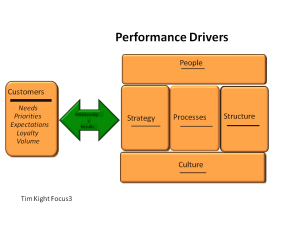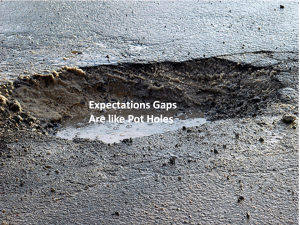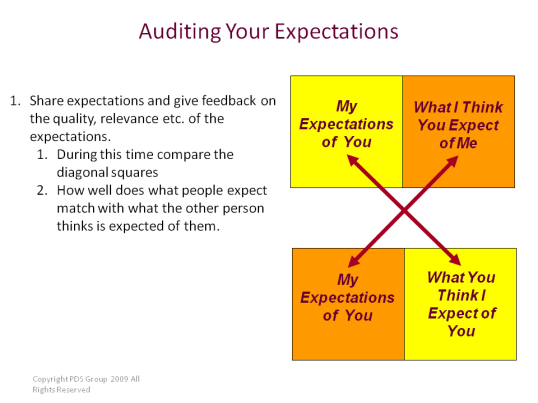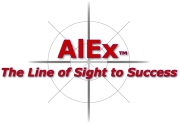Size – These large projects are large, with capital budgets currently ranging from $250 million to $7 billion, or US$25,000 to US$70,000 per flowing barrel. Projects facilities range in size from10,000 bbl/day to over 100,000 bbl/day. Every day of schedule slippage could cost between $1 million and $10 million in lost revenue. Complexity – These projects are characterized by a large diversity of functional areas each with separate project managers, budgets and schedules. There are many project elements, requiring a long build schedule with the possibility of multiple EPCs and many and diverse suppliers and contractors.
For example: Designing and constructing a $3-billion oilsands project can involve the following:
(Why Cost and Schedule Overruns on Mega Oil Sands Projects?, George F. Jergeas, Ph.D., P.E.1; and Janaka
Ruwanpura, Ph.D., PQS2; Practice Periodical on Structural Design and Construction, ASCE / February 2010)
Engineering effort:
- 3.5 million work hours at a cost of $100/h.
- 40–50,000 design drawings.
- 10–20,000 vendor and shop drawings.
Construction effort:
- Typically runs at 5,000 work hours for each million dollars invested, i.e., 10–15 million man-hours at $85–$100 per hour for a $3 billion project..
- Supported by 500–800 staff personnel.
- Labor force of 10,000 workers with a turnover of 30,000 people. (Even using the lowest North American average estimates of replacement costs for $8.00/hr employees of $3,500, this equals a cost of $105 million!)
- Organize order, store, and retrieve 80,000,000 material items.
Procurement and transport logistics challenges to a remote location can be exacerbated by long lead times on key equipment, increasing the risk of scheduling conflicts and slippage. Personnel training, scheduling and logistics are complex and include continuous flights bringing workers in from Eastern Canada and elsewhere. There are complicated communications lines among the functional areas, contractors, locals business and governments. The involvement of multiple equity partners with substantial financial interests adds another level of accountability and can be a bottleneck in decision making. Partner communications can add significant project overhead and makes it more difficult to respond to change, or innovations arising mid-project that could benefit the project.
Climate – Harsh climatic conditions affect productivity, health and safety, and project costs, especially for workers unused to working in these conditions. Health & Safety – In addition to working in a harsh climatic environment, cultural and language barriers with foreign workers can affect safety. High turnover and inexperienced workers pose dditional safety risks.
Labour – Availability and Productivity – As projects begin to ramp up again, the risk of shortages of experienced project managers and skilled labour may again increase. Personnel retention was a major issue during the construction boom up to 2008. The cost effective integration of aboriginal contractors requires special attention. The balance between union and non-union labour must be planned and managed. Housing and the cost of living are expensive in the Ft. McMurray area. Workforce scheduling and logistics are a major challenge and there has been lack of cooperation among operators in this area, largely based on concerns around losing personnel to other projects.
Environmental – Oilsands projects have become the centre of media attention in the past few years. Thus, even the design and construction phases of these projects must demonstrate a proactive stance, rather than just compliance.
“In summary, future oil sands projects are going to be more complex due to both a set of external and internal factors interacting dynamically with each other. This means that the industry’s ability to manage socio-political, economic and technological fluctuations over a project’s life will be critical. This is not an advocacy for throwing out the tried and true project management disciplines but learning how to use them in far more fluid circumstances”
(Richard Westney, Westney Consulting Group)
“Insanity: doing the same thing over and over again and expecting different results”
Albert Einstein
The State of Oilsands Projects
During the 2005 to 2008 period, oilsands projects were notoriously over budget and behind schedule. With the current ramp up of projects, can we face similar cost escalations and labour shortages in the coming years?
Randy Ollenberger, (BMO Nesbitt Burns Inc.), points to the expansion of the Athabasca Oil Sands Project as it was the biggest project to continue construction throughout the entire market crash. But rather than costs falling, they continued to rise.
“If there were great savings to be had, they should have captured them. And clearly they haven’t,” he said.

Steve Laut, President, Canadian Natural Resources (05/21/10) fears that cost escalations may be an unavoidable outcome of the rush to get back into oil sands.
“There will probably come a point in time that people feel confident oil prices aren’t going to fall to $30 [U.S.] again and everyone will have their engineering done more or less at the same time. So there’s potential that you could get some overlap in projects. Canadian Natural is already struggling with the lingering effects of the last boom, when triple-digit oil prices propelled a mad building scramble. That has resulted in operational problems at the first phase of its Horizon oil sands project, which Mr. Laut admitted has been “bumpy.”
A recent Booz Allen Hamilton report, “Capital Project Execution in the Oil & Gas Industry”, indicated that the majority of energy industry executives:
- Are dissatisfied with project performance (40% of capital projects overrun) his level of dissatisfaction is the highest ever.
- Agree that poor project performance is not acceptable when the market expects predictability and strong returns.
- Accept that they cannot afford to miscalculate project risks, yet they do not have a good grasp as to how to manage them.
According to Richard Westney, Westney Consulting Group,
“Everyone in the industry is aware of the major cost overruns and schedule delays associated with major projects today. An often overlooked fact is that these overruns are often announced when projects are well into construction—long past sanction and at a time when traditional project risks have (or should have) been mitigated. How is this possible when conventional wisdom suggests that all project risks should have been understood and under control by this time? Conventional project risk management is based on two assumptions:
• Good “front-end loading” ensures a high level of confidence in the estimate of time and cost at sanction.
• Project risks decrease with time and progress.”
Since it is not uncommon for projects with good front-end loading to experience major overruns well after sanction, we must ask, “What is missing from the conventional approach?”
Symptoms and Causes
The symptoms of “project failures” or significant negative variance from plan are obviously manifested in easily measurable parameters such as budget overruns, lateness and safety issues. However, problems can start long before these measurements of tactical activity are possible. Jergeas et al5 point out that the trend towards project fast tracking can result in appropriate planning time being traded for overly ambitious construction schedules which can result in more overtime and higher materials and equipment expenses. In addition, inadequate time spent planning in areas of risk management, project control, communications, organization, contracting, design, procurement, site layouts, utilities, commissioning and external stakeholder management, among others, can result in a fundamentally misaligned project strategy. Conversation with oilsands operators and a review of the 2004 multi-sector study by PricewaterhouseCoopers (PWC), “Boosting Business Performance through Programme and Why Cost and Schedule Overruns on Mega Oil Sands Projects?, George F. Jergeas, Ph.D., P.E.1; and Janaka Ruwanpura, Ph.D., PQS2; Practice Periodical on Structural Design and Construction, ASCE / February 2010
Project Management”, among the top reasons cited for “project failures” were issues and misalignments in the following areas:
- Late scope changes

Nearly but Not Quite
- Change in environment
- Insufficient resources / Poor support
- Poor communications
- Poor project processes and controls
- Poorly developed teams
- Poor partnering strategies
- Poor contracting strategies
- Team turnover
- Inadequate definition of stakeholders
Late Scope Changes – To what extent are scope changes the result of inadequate communication of expectations between owner and EPC, or EPC and contractors? At the earliest stages of the project, inadequate specifications can be a root cause. The owner may expect the EPC to have conducted a thorough review of specifications prior to start of drafting. Was this expectation communicated and detailed evidence of completion requested? The later in the project these sorts of changes occur, the more expensive they become. Attempts to appease, accommodate or just to get things done means change orders or scope changes are too readily accepted without sufficient impact analysis. This situation is often compounded by having no firm and set date beyond which no further changes are accepted. It is reminiscent of Mr. Creosote, a fictional character in Monty Python’s the Meaning of Life. Creosote is an impossibly obese man who is served an enormous amount of food in a restaurant. After being persuaded to eat one more mint, he explodes in a very graphic way. The key error is the consequent layering of changes creates an almost blinkered approach of approvals or rejections while losing sight of bigger, end repercussions.
Changes in Environment – It may be beneficial to ask the question, “How can we improve our ability to respond to environmental and other changes”? To what extent could improved communication of expectations mitigate these issues? Have the owner and EPC clearly relayed their expectations of rapid communications from contractors and suppliers when circumstances change? Does the project have a change management plan with specific communication protocols for managing crises?
Insufficient Resources / Poor Support – Supply chain logistics are both critical yet vulnerable aspect of oilsands project execution. It relies heavily on proper communication and tracking agreed and unmet expectations. Shift scheduling and logistics optimization offer large opportunities for efficiency gains. To what extent are the expectations of efficient and proactive communications relayed to all levels of the project structure? What mechanisms exist to facilitate this and ensure monitoring of logistics operations? Especially lacking are those inter-professional expectations which don’t really specify what is being agreed to. The act of agreeing on an expectation is too easily accepted. The problem emerges when the expectation’s Receiver doesn’t deliver what was expected by its Originator. The problems often lies when the Originator doesn’t ask the Receiver to state what evidence they think meets the given expectation. This situation is often compounded under stressful and changing conditions where the ramifications of meeting the new expectation are not fully considered on existing commitments.
Poor Communications – The number of possible lines of communication in a project can be expressed as n2 – n, where “n” is the number of people assigned to the project. Thus a 100 person project would have 9,900 possible communication links. Regardless of matrix, project or siloed command structures, there are still many cross functional and contractor expectations that are not surfaced or managed and that impact project execution. These lateral links are so numerous and not so obvious that important connections for timely and accurate communications are missed. Many would say with all the technology now available, all those involved have access to what everyone else is doing or challenged by. The reality, as one Project Manager expected of a design engineer: “If you find out you can’t make your deadline, don’t email me – pick up the @#$% phone…” Communications technology has become a two- edged sword – efficient yet overwhelming. While many respondents cited poor communication a significant problem, to what extent are poor communications or processes a root cause of the other cited project failures? Following are quotations gathered from participants in various projects:
 1. “We could be better at identifying problems and their solutions before they actually occur. We are too reactive and this slows us down”
1. “We could be better at identifying problems and their solutions before they actually occur. We are too reactive and this slows us down”2. “The way we allocate resources and feedback on their (subcontractors’) performance compounds problems in managing projects”
3. “People get so absorbed in what they are doing that Key Stakeholders are not actively involved. This has led to tension between them and the project team”
4. “We are reactive and respond too quickly to changes to understand the implications and impacts on other elements and groups”
5. “We don’t reuse what has been done before – “Reinventing the Wheel” is costly and takes time”
6. “Measuring the impact of what we do is too subjective and lessens our ability to stay within budget”
7. ‘Cost overruns and missed milestones are too common and compounded by finger pointing”.
Some of which are directly attributable to expectation gaps:
Project Team Dysfunctions

Dysfunction #1: Absence of Trust
This occurs when team members are unsure what others really expect of them as opposed to what their company has committed to legally.
Dysfunction #2: Fear of Conflict
Teams that lacking trust are incapable of engaging in unfiltered, passionate debate about key issues. This causes situations where team conflict can easily turn into personal, veiled discussions and a retreat to pure self interest.
Dysfunction #3: Lack of Commitment
Without conflict, it is difficult for team members to commit to decisions, creating an environment where ambiguity is comfortable. Lack of direction and commitment can make project partners and teams disgruntled, fall into formal communication and lack of responsiveness.
Dysfunction #4: Avoidance of Accountability
When teams don’t commit to a clear plan of action, even the most focused and driven individuals hesitate to call their peers on actions and behaviors that may seem counterproductive early enough to correct a situation for the overall good of the project.
Dysfunction #5: Inattention to Results
Project team members naturally tend to put their own needs (ego, career development, recognition, etc.) ahead of the collective goals of the team when individuals aren’t held accountable. If a team has lost sight of the need for achievement, the project ultimately suffers.
The above dysfunctions are rooted in problems with aligning expectations.
(Adapted from Patrick Lencioni “Five Dysfunctions of a Team”)
“Expectation Gaps are like pot holes, the more you leave them the deeper they get. The impact of misalignment leads to projects overruns.” (Nick Anderson, PDS Group LTD)
Poor Project Process and Controls Execution – It is the daily execution using project process controls that makes the difference. Senior management can be forgiven for thinking that if processes and controls are in place that they are being used diligently. However, the early clear communication of specific expectations around development and use of these systems is foundational to success. Increased complexity and changing dynamics in running oilsands projects means the industry has to pay more attention to the costs of misalignment.
Poorly Developed Teams – While projects of this size and complexity usually command the best available personnel, Alberta companies often have large experience gaps between senior managers and junior managers. Bridging these competency gaps requires clear expectations communication of responsibility not just tasks. Then, crucially, conversations must align expectation originators with the expectation receivers, including deliverables. Only then can the originator effectively rate the receiver’s competence and performance.
Poor Partnering Strategies – Staffing for inter-partner communications, that add millions of dollars to the cost of a project, buffer the project teams from regular and ad hoc reporting and information requests. The less work that is done up front in explicitly defining expectations in geographically remote and culturally different partners, the more cost in communications. Far more important however are the potential for delays in the project where unexpected circumstances need decisions requiring consent from partners. These may be changes in project circumstances or opportunities for applying improvements or innovation with potential positive economic impact on the project.
Poor Contracting Strategies – Failure to document performance guarantees and risk sharing obviously undermines contractual relationships. However, on site, it is really about avoiding ever to having to use them. As many say, “if you have to get the contract out then we really are in trouble!”. Partnering starts to fail when specific expectations aren’t communicated, agreed, discarded or are unresolved to avoid using these contractual devices. Successful partnering is founded on: ”Getting personal to prevent ever getting contractual”.
Team Turnover – Poor communication and alignment of expectations often causes of turnover. When expectations like budgetary discretion, scheduling flexibility and safety protocols are not only agreed but managed to, employees may not wish to stay and face the consequences. This will be a major factor again if the industry goes back to its practices of the last boom in Alberta. Apart from cost and experience and project knowledge “walking out the door” from the project managers risk losing well established relationships both within and outside the team. They then hobble their replacements with no clear commented expectations to help new team members get up to peed with the right people.
Inadequate Stakeholder Engagement – Oilsands project stakeholders are diverse, typically including owners, EPCs, contractors, suppliers, logistics providers, regulators, local communities, local businesses, aboriginal communities, environmental groups and others. It’s natural for those planning projects to focus on project execution. Yet how often has their apparent disregard of some stakeholders led to delays, scope creep and cost overruns? Here the illusion of efficiency fails to take into account those that need to be onside for the project’s success. This then creates a corrosive element to relationships when stakeholders feel disregarded. By the time Project Staff realize the need to align they have an uphill battle to convince these parties of there inadvertent lack of alignment. The key concern is: How many of these stakeholders and project staff will then be involved on subsequent projects. Mutual suspicion built up from one project bleeds over to the next project.
Summary
In summary, planning, whether “fast track” or not, still requires a clear concise and communication of expectations by stakeholders along key aspects of the project strategy. While this paves the way for successful project execution, simply allocating the resulting tasks does not ensure success. Without project manager’s expectations being understood and “bought in to” by the engineering or construction domains, improved performance will not occur. Fast Tracking methods of strategic planning and construction risks getting ahead of stakeholder’s ability to measure, manage and facilitate communication. New methods of more effective communication and alignment of critical expectations are needed to cope with this decade’s accelerating project dynamics.
3.0 Expectation Alignment for More Effective Project Planning and Execution
You Can Only Manage What You Can Measure
Effective interpersonal communications is a recognized cornerstone of successful project management. Why then is it so metric and data starved? How can we manage what we cannot measure?
Many people who run projects will tell you:
“Building the thing is not difficult compared to managing all the people involved”
So,
- How do we develop measurable ways of working more effectively?
- How do we assess people’s expectations of others with those others have of them
- How can we help people be more aligned and focused
- How can we drive performance discussions between groups and individuals on their expectations and assumptions that result in:
o Specifying clearer performance criteria against which individuals/groups will be measured
o Removing expectations that are non-value added and not strategically aligned
o Identifying significant issues to address for project advancement
o Creating an accountability framework
The AlEx™ Expectation Alignment methodology is a key driver of change which accelerates alignment and tracks the development of working relationships. Such tracking includes:
- Distractions that impact work loads
- Misaligned expectations which reduce flexibility, risk rework and cost overruns

Human glue
- Factors that reduce cross functional competitiveness
- Misalignment with organizational principles and strategies
- Productivity issues between managers and their staff
- Quality of interpersonal communication
- Integration of new team member
- Performance tracking & management
- Recruitment & talent management
The impact of this approach is:
- Insurance against projects delays
- Faster project execution
- Better productivity
- Improved employee retention
- Attracting people who are naturally better aligned
Essentially these benefits accrue when all people understand:
- What is expected of them
-
What they can expect from others
-
How well they are strategically aligned
-
How their performance is measured and compensated
-
What they can stop doing
-
What they need to focus on
-
What information and resources can be used to achieve their goals
-
How they are going to be supported and coached
How AlEx™ Works
Using the
AlEx Easy Entry™ web application, individuals identify their expectations of others and what they think is expected of them. AlEx™ is then used to analyze content, quantity, and quality of the Expectations generated. AlEx™ Cross-Hairs Alignment Tool™ provides targeted data pictures of groups and one-on-one relationships as shown on the right.
For example, the relationship between Tom and Cliff looks aligned if you only look at Tom’s expectations of Cliff (13) and what Cliff thinks Tom expects him (12). But, Cliff’s expectations (22) & What Tom thinks Cliff expects of him (4) tells a different story. Users are then shown how to use their
AlEx™ Cross-Hairs Alignment Tool™ to “rifle-in” on data to prioritize which alignment meetings are really needed. Then users meet and decide which of their expectations are:
- Discards
- Unresolved
- Agreed
This ability to “rifle-in” on key issues before they cause entrenched discord is much like “clash identification” in BIM (Building Information Modeling).
” AlEx™ is the “human cousin to BIM”
Dick Ortega, President, Alternative Mechanical
Building Information Modeling (BIM) is the process of generating and managing building data during its life cycle[1]. Typically it uses three-dimensional, real-time, dynamic building modeling software to increase productivity in building design and construction.[2] The process produces the Building Information Model (also abbreviated BIM), which encompasses building geometry, spatial relationships, geographic information, and quantities and properties of building components.
AlEx™ Outputs
1. Distraction Index
The Distraction Index identifies which individuals or groups are aligned or distracted from achieving strategic goals:

Closing the Distraction Gap
- Aligned, and Doing Things that are Expected — expectations and assumptions of these expectations are in balance.
- Distracted, and Doing Things that are Not Expected — individuals are making incorrect
- assumptions about what others expect of them
- Distracted and Expecting Things that are Not Done — expectations exceed assumptions of those expectations.

Designers & Owners Tension Ratings
2. Tension Ratings
Expectation originators rate each of their expectations on a scale from High (project critical) to
Low Tension if an expectation is not met. Tension rating filtering enables users to see how well they are aligned
in terms of stress and the importance others place on different areas of the construction process.
3. Cross-Hairs Communication Channel Analysis
Un-Channeled
In a construction project, groups are often expected to change who they
communicate with and about what. If for example, the General Contractor’s Project Executive is expected to work closely with the Chief Superintendent to adopt Lean Construction practices to meet Owner expectations and they d

Misaligned Core Group
o not have any expectations of each other! Conversely, if the Design Engineers now report directly to the newly appointed Owner’s Engineer and not the Owner’s Facilities Manager then you would not want to see people still having expectations of the GM.
4. Cross-Channeled
Medium levels of expectations are often needed between different professions and trades as the main construction phase begins. This is especially true in Design-Build Projects
Highly-Channeled
High levels of expectations are needed where people work in the same function or project, e.g. Owners and EPCs.
5. Dealing with Change
Changing project circumstances require timely responses. AlEx™ is a real time system that enables adaption of existing or creation of new expectations to handle change. E-mail updates of such changes can be automatically broadcasted. AlEx™ has adjustable granularity, i.e. it can deal with high level expectation alignment through to execution level task alignment, depending on the changed circumstance.
6. How Does AlEx™ Integrate with MS Project™ and Other Project Management Systems?
AlEx™ acts as a project management “front end” to keep existing project reporting systems updated with not only task completion status, but also with changed expectations required by changing internal or external circumstances. Thus expectation alignment can be maintained without having to change pre-existing reporting systems. The interface between AlEx™ and existing systems is done via scheduled batch file updates. Thus even if the project “playing field” changes, the benefits of aligning team members are realized continuously throughout the life of a longer project using existing reporting systems. Adding AlEx™ can make existing project management systems more than just dashboards, they can become navigation systems, to keep the project on course as circumstances change.
4.0 Case Study – Building Construction Project (See Case Study)
Symptoms
This large construction firm manages and constructs large projects around the world. Some of their most complex work is on hospital projects. In this case, the number of change
orders, RFI’s (Requests for Information) and building decisions awaiting government regulatory agency approval had pushed a $500 million hospital project into crisis.
The owners and prime contractors were faced with escalating change orders brought on by a number of factors including drawing quality, owner groups changing their specifications and a series of contractual changes. Consequently, the overall contingency fund for a three hospital project was being depleted at an accelerated rate.
Relations between owners, engineering firms, architectural design professionals, subcontractors and the general contractor had become strained.
The leadership group representing the major players became increasingly concerned about the ineffectiveness of OAC meetings (Owner/Architect/Contractor), and the cost of having so many rofessionals/consultants on hand, all charging professional level hourly rates.
Diagnosis and Therapy
The AlEx™ Expectation Alignment methodology was employed with the following approach:
- Facilitation of meetings with each of the main group’s leaders to elicit their perspective on the key issues and what they wanted to be better aligned on with other groups/individuals.
- Development of consensus of six key issues or “components” on which all 7 groups (a total of 35 people from 17 companies) agreed would require alignment
- Coaching of all these players in generating expectations for each of these components (within and between groups)
- Providing analysis and feedback to the leadership team, isolating several key initiatives.
For example:
- Aligning OAC representatives to focus on key initiatives in each of the three projects
- Setting up structured coaching within owner, general contractor and architectural firms
- Aligning the change order process across the three projects
- Accelerating the decision to replace the incumbent architects and help integrate their replacement
- Aligning three architectural firms on fostering better co-ordination and common design policies
Outcome
The leadership group recognized the following tangible benefits from applying the AlEx™ system:
- Cost hemorrhaging was stopped.
- The project was completed on schedule.
- There was no post project litigation among the 17 organizations involved in project planning and execution.
Other intangible benefits noted by the client:
- Created a more productive environment for all of our building Partners Reduced or eliminated conflicts of all kinds by improving the way we communicate with each other
- Reduced schedule blocks and re-work, thereby maintaining the approved construction schedule
- L ed the way for our partners (Client, Design Team, Inspection Agencies, and Subcontractors) in conducting business in a fair, open, and trusting way as the means to eliminate profit erosion, conflicts, and claims
- Utilized “Partnering” as the means to accomplish our initiatives In a “design-build” environment which included a government owner, we were able to resolve several major conflicts using AlEx™ to expose hidden and unspoken expectations in “real time.
- Ongoing communications became much more interactive and without conflict.
- Tools from our partnering sessions are long lasting were used by all parties almost daily to insure the success of each stake holder. A reduction in lost time and resources resolving “festered” conflicts, because most were resolved before they reached such a state.”
5.0 Project Teams as a Neural Network – The Foundation for a Culture of Alignment and Accountability The Project “Brain”
Consider each team member a neuron in a “Project Brain” and the lines of expectations with other team members as synaptic connections. A one way expectation will be a weak synaptic connection

Project Synapses are essential to neuronal function: neurons are cells that are specialized to pass signals to individual target cells, and synapses are the means by which they do so.
until it is acknowledged and accepted by another neuron.The AlEx™ expectation alignment process facilitates and measures the creation of aligned expectations so the Project Brain grows and learns to better able to handle change. Thus, like brain plasticity now being discovered in humans, the Project Brain will adapt to changing circumstances by discarding synaptic connections (fulfilled or dropped expectations) or making new connections (new or altered expectations).The Project Brain is effectively self-diagnosing, exposing the squandering of energy (on unnecessary tasks) or resource deficiencies (lack of materials, knowledge or support). It can also regulate the release of hormones to stimulate action (tension ratings).
Tools Facilitating a New Project Execution Culture
We have seen how one of the most important aspects of project management, expectation alignment, can now be measured and managed. However, a toolkit and system to enable this does more than measure and manage, it promotes a culture of communication and accountability. Aculture of accountability is fostered by AlEx™ because it ensures team members gain a feeling of control over what is expected of them but also that their expectations of others are understood and evidence of task completion documented. As the entire AlEx™ process requires more effective communications, team members must incorporate it in their regular work activity.
Competency Development
Like any habit, coaching and repetition are key factors in adoption. Initially, facilitated expectation alignment sessions are combined with training on the web input of expectation parameters. Periodic monitoring of alignment progress then helps ensure the most efficient adoption of this methodology. Corporate internalization of the system is accomplished with relatively simple “train the trainer” sessions that enable provision of in-house facilitation and monitoring services. AlEx™ identifies communications weaknesses among managers, where coaching may be needed, thus strengthening the project team going forward.
Optimized Resource Allocation – Top Down and Bottom Up
For an improved accountability culture to take root, it must be not only top down and bottom up but omni-directional. It takes root because expectation originators are accountable to the expectation receivers to ensure they have the required competencies and tools. This is the neural connection that builds the Project Brain’s capacity because people explicitly know:
- What leaders expect of them (typically 70% of leaders’ expectations are either not known or understood by those executing the project)8
- What team members expect of their project leadership.
6.0 The ROI for Oilsands Projects
Sources of Payback
Adoption of any new process must have a return on investment. While Expectation Alignment has been successfully employed midstream to “projects in crisis”, it’s highest ROI is realized when used in real time to diagnose and address communications weaknesses and enable proper project planning and execution. Reviewing our key sources of failure, we can now see where payback can be expected applying Expectation Alignment:
Project Planning – Early alignment of all stakeholder expectations avoids expensive surprises and delays. Alignment facilitates “faster track” planning while reducing the problems of rushing to “Get on with it”, then paying the price later in areas ranging from design, project control and procurement.
Minimized scope changes – The owners’ expectations of the EPC to have conducted a thorough review of specifications can be conveyed in a very detailed manner using Expectation Alignment. This can avoid delays due to RFIs and change orders on critical path items. With delayed revenue costing millions of dollars per day, the investment in expectation alignment can payback in a single avoided change order.Expectation alignment can facilitate efficient assessment and incorporation of innovation that may have a significant long term benefit to the project economics. This is accomplished by enabling faster alignment and decision making among multiple project partners.
Change in environment – Even with a change management plan in place, a methodical and efficient way to incorporate new and discard old project expectations can mitigate costs by:
- Improving response time,
- Discarding activities quickly
- Refocusing project teams to the new realities
Resource and support issues- – Early definition of resource expectations all the way down the chain of command can avoid costly delays and expenditures. Similarly, competency gaps
can be identified sooner by engaging in expectation alignment processes.
Improved communications – With numerous stakeholders involved in planning, financing, permitting, engineering, procurement, construction, commissioning and operation of an oilsands asset, static definitional documents such a project charters and conventional project management tools are not designed to manage thousands of changing expectations. successful project execution rests on agreeing, discarding or identifying the unresolved. Expectation alignment methods identify managers who are especially strong or weak at communicating with their teams. Coaching or other remedial actions can thus be undertaken and the results monitored. Employing Expectation Alignment in materials supply chain and personnel scheduling / logistics stakeholders can have big paybacks in avoided scheduling problems. Improved project processes and controls – Expectation Alignment’s regular and measurable process of developing and agreeing project expectations are taken to a level needed for a given project. Unlike project reporting which can often identify symptoms, Expectation Alignment tools also make accountability for task execution highly visible. Expectation Tension Ratings may also reveal important tasks that are not necessarily on the critical path but can have huge ramifications to project schedules or budgets.
- Late scope changes
- Change in environment
- Insufficient resources / Poor support
- Poor communications
- Poor project processes and controls
- Poorly developed teams
- Poor partnering strategies
- Poor contracting strategies
- Team turnover
- Inadequate definition of stakeholders
Stronger teams – The Expectation Alignment process demands that Expectation Originators ensure that Expectation Receivers have the competency and resources to complete the required tasks. In situations where senior managers are working with junior personnel, assumptions are often made on their level of process knowledge and industry practices. Expectation Alignment addresses these issues by facilitating the alignment conversations that reveal experience gaps early enough to develop people and avoid later termination.
Stronger partnering strategies – Early definition of equity partner expectations among all key project themes and issues can be achieved using expectation alignment. This can reduce inter-company communications staffing requirements, but most importantly accelerate partner decision making when circumstances change or opportunities arise.
Improved contracting strategies – Incorporating subcontractors and key suppliers in the Expectation Alignment process often reveals owner expectations and other stakeholders are not captured in specifications and contracts, yet play a significant part in them being effective. Diagnosing and addressing these issues avoids later conflicts and delays.
Retention of talent – Again consider the 5 key” Project Dysfunctions”. ( Absence of trust, fear of conflict, lack of commitment, avoidance of accountability and inattention to results). Getting teams participating in facilitated expectation alignment sessions creates an objective assessment of team stressors and progressively builds a more robust and productive project team culture. Based on this foundation, Expectation Alignment becomes an effective tool to getting new people up to speed and address competency gaps before their credibility is damaged.
Better stakeholder engagement – while inclusion of all stakeholders is an obvious apparent remedy to avoiding later project problems, the explicit definition of mutual expectations, especially of external stakeholders, can yield big paybacks. For example, proactively establishing a local community’s expectations before major decisions are taken builds inclusivity and provides a more objective basis with which to resolve later conflicts and political changes. Projects with international partners can address cultural and other barriers with explicit expectation alignment methodologies.
Summary
In summary, where delays are measured in millions of dollars a day, improving the speed and agility of construction has been the “holy grail”. This pursuit encourages putting in place more controls and systems which often fail to adequately cope with increasing project complexity and dynamics. Effective decision making needs the marriage of authority and accountability on-site, not its divorce to some remote decision maker. Simple, methodical alignment and monitoring of expectations reinforces this marriage to yield very tangible savings in time and money.
Great, but how can this help me?
This is probably the first thing on your mind after reading this Blog. How about asking us? The first call is free! Just email me to set it up. Don’t wait, get PDS working for you!. If our conversation leaves you needing more, we offer at a reasonable fee telephone and video coaching on change, alignment, and executive performance that improve the bottom line. If that still doesn’t do it, we’ll work with you on a solution.
____________________________________________________





























 How do you balance helping potential clients feel understood while ensuring they understand the issues and options available?
How do you balance helping potential clients feel understood while ensuring they understand the issues and options available?







